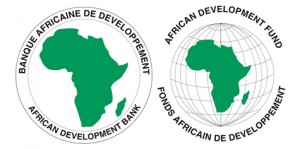AfDB approves $24m in PPP deal for Ghana forest restoration project
 The African Development Bank (AfDB) has announced approval for $24 million for Ghana to restore degraded forest reserves and double a sustainable forest plantation on September 22, 2016.
The African Development Bank (AfDB) has announced approval for $24 million for Ghana to restore degraded forest reserves and double a sustainable forest plantation on September 22, 2016.
The project, a first of its kind Public-Private Partnership (PPP) in the forest sector is backed by a $10-million concessional loan from the Climate Investment Funds’ Forest Investment Program (CIF FIP) approved on July 1, and supplemented by $14 million in co-financing from the AfDB, the Africa focused multilateral has said.
According to the AfDB, the project approval comes a day after Ghana ratified the Paris Agreement on climate change at the UN in New York, signaling the country’s commitment to linking its climate action and development path.
“Ghana’s restoration of its forest sector will play an important role in meeting its commitments under the Agreement,” the AfDB added.
The AfDB indicates that in line with CIF and its own standards, the project has been structured through extensive engagement with all stakeholders throughout the country.
“Expected outcomes from the project include: net greenhouse gas sequestration potential of around 2.8 million tonnes CO2 over 40 years (a long-term average of 70,103 tCO2 per year); 11,700 ha of sustainably managed forest plantation with FSC and VCS certification; and 400 direct full-time jobs and 600 direct seasonal jobs. The project includes a goal of ensuring that, in this heavily male-dominated industry, 40 per cent of the jobs generated through the project will be held by women,” it said.
Degradation of Ghana’s forest reserve has grave consequences, as the sector provides jobs to more than 270,000 people in both the formal and informal sectors.
Estimated to contribute about four per cent to the country’s GDP, the sector provides livelihood for about 650,000 people.
At the turn of the 20th Century, Ghana’s forests covered around 8.2 million hectares of land. But by the late 1980s, the forest cover shrunk to less than 18,000 km2, which means a reduction of the forest cover to 2.1 million hectares.
By the year 2007, the forest cover of the country has been reduced significantly to 1.6 million hectares, and forestry sources say since independence from Great Britain in 1957, the annual rate of forest loss has been averaging 65,000 hectares yearly.
And according to the Food and Agriculture Organisation (FAO) of the United Nations, between the year 2000 and 2005 Ghana lost an average of 115,400 hectares of forest per year.
Meanwhile, Ghana’s forests contribute about five to eight per cent of GDP and it is 15 per cent of merchandise exports. Ghana’s forest products, especially timber are the third highest foreign exchange earner for Ghana’s economy after cocoa and gold. Every year Ghana earns some $300 million from timber products.
By Emmanuel K. Dogbevi
Copyright © 2016 by Creative Imaginations Publicity
All rights reserved. This news item or any portion thereof may not be reproduced or used in any manner whatsoever without the express written permission of the publisher except for the use of brief quotations in reviews.
